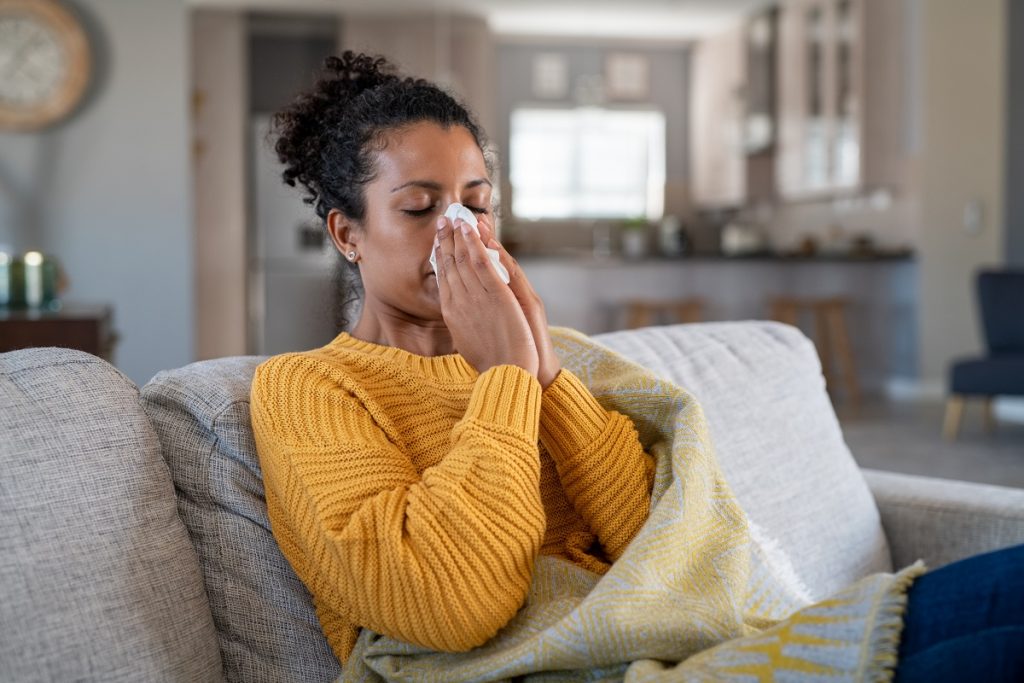- Proper ventilation is key to preventing moisture buildup in your home.
- Controlling humidity levels between 30-50% can minimize health risks.
- Regular inspections and immediate repair of leaks are crucial for preventing mold growth.
- Consistent indoor and outdoor maintenance is essential in keeping moisture at bay.
- Seek professional help for severe water damage situations.
Maintaining a healthy living environment for your family goes beyond regular cleaning and dusting. One of the silent threats that many households face is moisture. Over time, this seemingly harmless occurrence can create an environment conducive to health issues like allergies, respiratory conditions, or skin irritations. In your quest to provide a haven for your family, tackling moisture and its associated complications should be a priority. Here are five tips to help you prevent moisture-induced conditions in your home, ensuring a healthy environment for everyone under your roof.
1. Maintain Proper Ventilation
Your first step in warding off moisture-related problems is to ensure your home is well-ventilated. When a house doesn’t breathe, moisture and health risks accumulate.
Start by regularly opening windows, especially after activities that generate moisture, like showering or cooking. Invest in exhaust fans for areas like the kitchen and bathroom to mechanically remove damp air before it spreads. In rooms where large windows or consistent air circulation isn’t possible, consider using a dehumidifier to control moisture levels. Remember, fresh air isn’t just rejuvenating; it’s a silent guardian against moisture buildup.
2. Control Indoor Humidity

Understanding and controlling the humidity levels in your home can significantly impact your family’s health. Too much humidity and you’re welcoming a host of potential health issues; too little and inviting another set of problems like dry skin and irritation.
Keep an eye on your indoor humidity using a hygrometer, aiming for 30-50% levels to minimize health risks. Air conditioning or a dehumidifier can help regulate excess indoor humidity during hot, humid seasons. During the colder, drier months, a humidifier can add moisture to your home air. Balancing your home’s humidity levels is a subtle art that, when mastered, can create a comfortable and safe living environment.
3. Immediate Repair of Leaks
Small leaks can lead to big problems. From a health perspective, ignoring a dripping faucet, a leaking pipe, or a weak roof can lead to moisture accumulation, creating a perfect breeding ground for mold and mildew, which are known to cause respiratory issues, among other health problems.
Here are tips to deal with leaks:
Regular Inspection
Conduct routine inspections around your home to identify any potential leaks. Look for signs like water stains, damp spots, or mold growth. If these signs are present, there could be a hidden leak.
Hire Professionals
If leaks are complex or difficult to locate, consider hiring a professional. Plumbers and roofers have the skills and equipment to detect and repair leaks, saving time and preventing further damage.
Use Quality Materials
When repairing leaks, it’s crucial to use high-quality materials. Using durable and water-resistant materials can ensure a more robust and long-lasting repair, reducing the likelihood of future leaks.
Regular Maintenance
Regular maintenance is key to preventing leaks. By routinely checking your pipes, faucets, and roofs, you can identify potential issues before they become significant problems. Regular maintenance could involve cleaning gutters, insulating pipes, and checking the roof for damage.
4. Regular Cleaning and Maintenance

A clean home isn’t just visually pleasing; it’s a health mandate. Regular cleaning is a frontline defense against the moisture buildup that invites allergens and irritants into your living space.
Incorporate a cleaning routine that focuses on areas prone to dampness, like bathrooms, basements, and kitchens. This routine should include checking for signs of mold or mildew and using cleaning products that can kill these potential threats. Don’t forget your home’s exterior; clean gutters and downspouts regularly to prevent water buildup and seepage into your home’s walls or foundation. Maintenance extends to keeping your living area clutter-free, as the disorder can trap moisture and facilitate mold growth.
5. Seek Professional Help When Necessary
Sometimes, despite all preventative measures, severe weather, unexpected leaks, or hidden moisture sources can lead to water damage beyond a simple fix. This is when professional intervention becomes necessary.
Suppose you are facing a situation where moisture has caused more extensive damage, perhaps through a flooded basement, a roof failure, or broken main water lines. In that case, it’s time to invest in professional water damage restoration. These professionals have the tools, knowledge, and skills to deal with significant water-related issues, ensuring all affected areas are dried, sanitized, and restored to prevent long-term health impacts. They can also identify and rectify the subtle water damages that might not be visible to the untrained eye, ensuring your family’s environment remains healthy and safe.
In Closing
Preventing moisture-induced health conditions in your home revolves around proactive measures and timely reactions. Maintaining proper ventilation, controlling humidity, attending to repairs promptly, and upholding a strict cleaning regimen significantly reduce the risk factors associated with excess moisture.
However, recognizing when a situation requires professional expertise can be equally important in safeguarding your family’s health. Through vigilance and prompt action, your home can continue to be the safe, comfortable sanctuary your family deserves.

